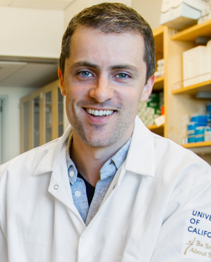
Presented by alumnus Joseph Bondy-Denomy, PhD (BSc Biology '08), who will be awarded the Young Alumni Award at 3:00 pm on Friday, March 6, 2020 at the University Club.
Dr. Bondy-Denomy is an Assistant Professor in the Department of Microbiology & Immunology at the University of California, San Francisco, and is best known for his ongoing investigations in CRISPR-Cas immunity, with implications in therapeutics for human genetic and infectious disease, as well as our basic understanding the microbial world. Dr. Bondy-Denomy is Scientific Advisory Board Member of SNIPR Biome and Excision BioTherapies and has expanded his research activities to the private sector as co-founder of and Scientific Advisor to Acrigen Biosciences
Membrane bound organelles are a central tenant of eukaryotic cell biology, and largely absent from prokaryotes. However, protein-encased structures have been identified in bacteria, for example encapsulins and carboxysomes that localize enzymes, but none that compartmentalize nucleic acid. However, recent work has described the discovery of a prokaryotic proteinaceous compartment that mirrors a nucleus, localizing DNA replication and transcription into a centrally located, segregated structure, while translation happens in the cytoplasm. Intriguingly, this structure is made inside a bacterium, but not by the bacterium. This process is entirely directed by a bacterial virus, or bacteriophage. I will discuss this remarkable structure and our recent findings that this proteinaceous nucleus-like compartment segregates phage DNA from restriction and CRISPR-Cas nucleases, providing the most broad spectrum resistance to bacterial immune pathways described to date. This will be contrasted with specific inhibitors of CRISPR-Cas function, or “anti-CRISPR” proteins, also encoded by phage that our group has identified.
